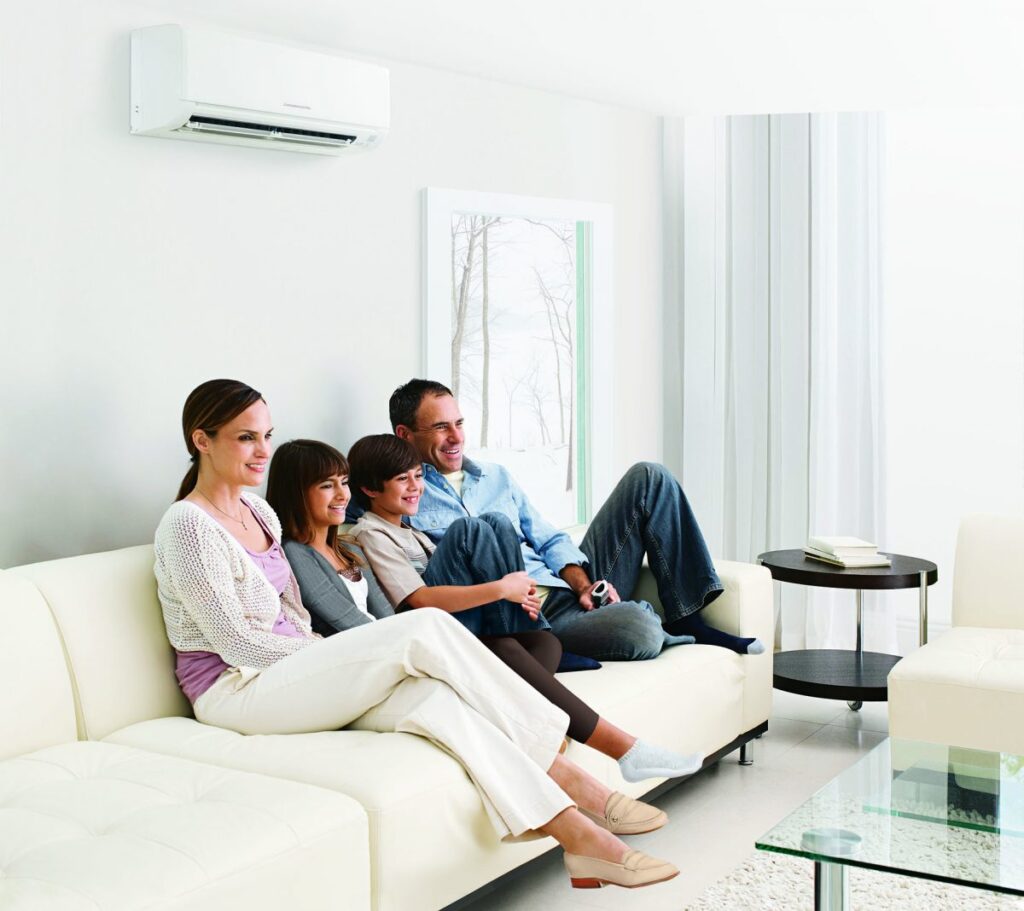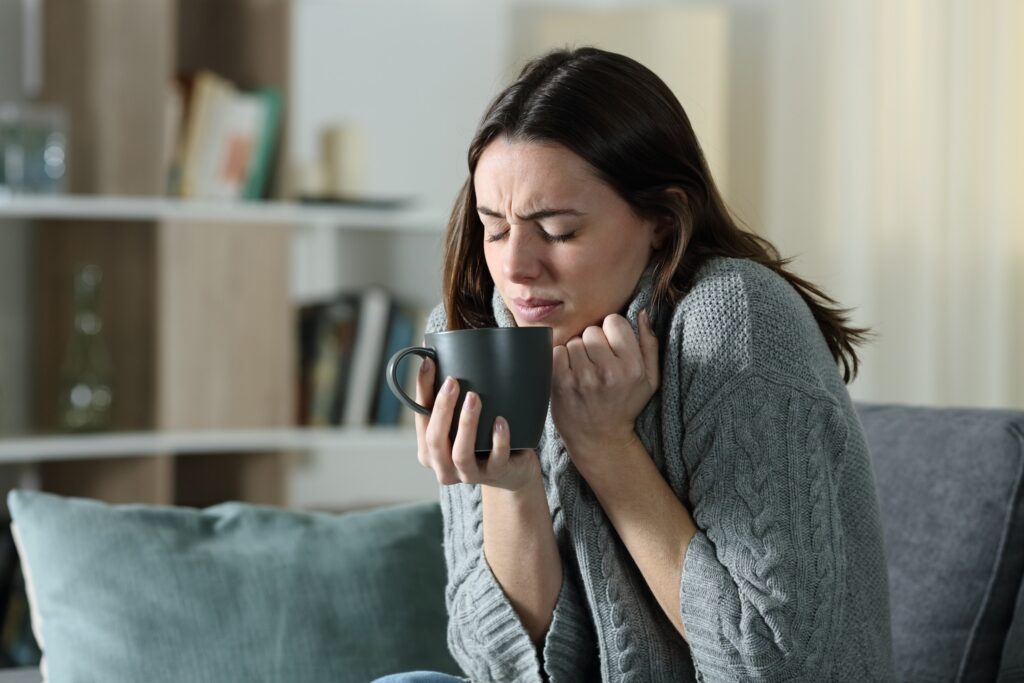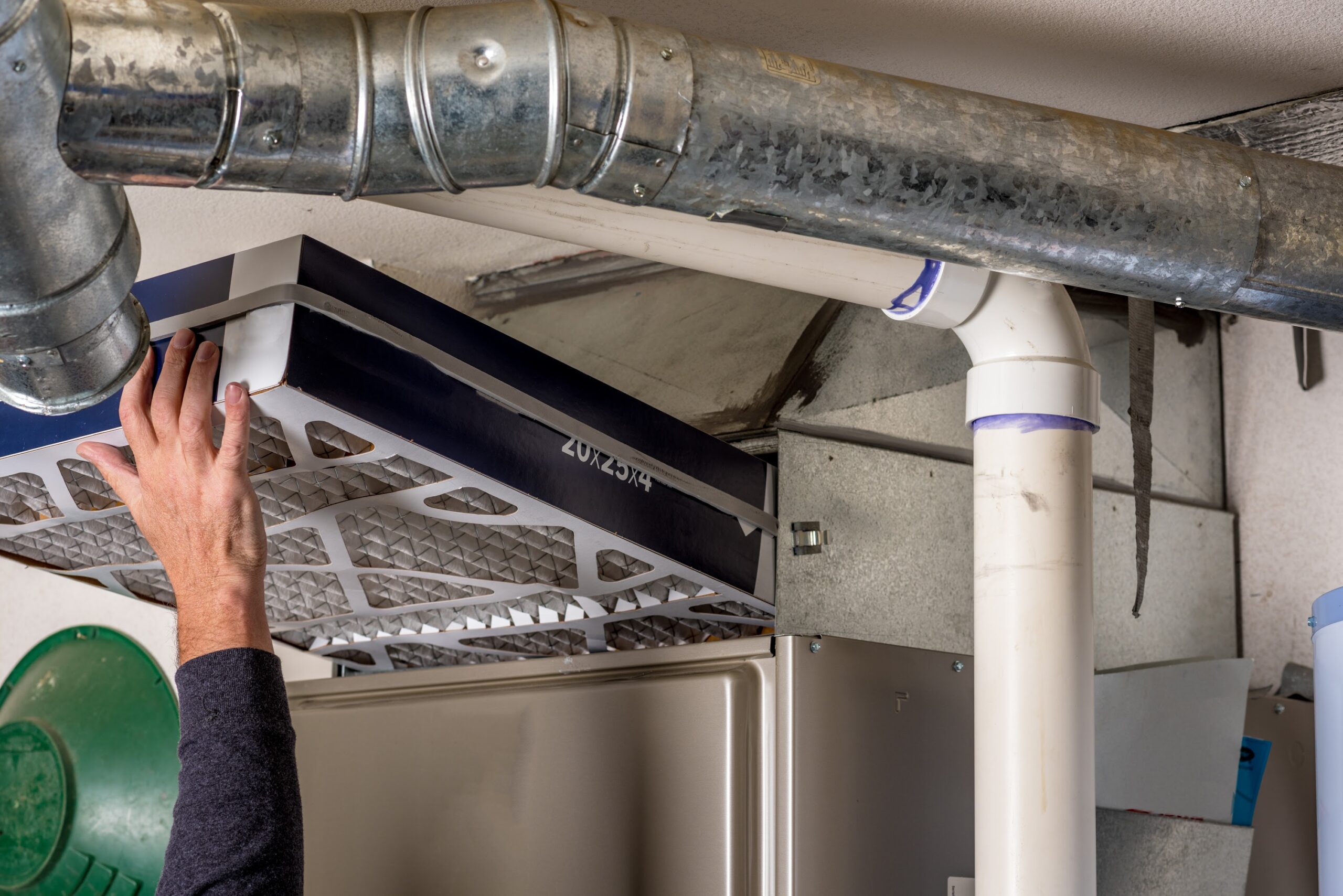HVAC systems are designed to control the temperature, humidity, and air quality of your home or business. They use a combination of heating, cooling, ventilation, and air filtration equipment to maintain a comfortable and healthy indoor environment. HVAC systems play a critical role in comfort, improving indoor air quality, reducing energy consumption, and promoting occupant comfort and well-being.
Humidity control is an essential aspect of HVAC systems as it affects indoor comfort, health, and energy efficiency. High humidity levels can lead to discomfort, mold growth, and poor air quality, while low humidity can cause dry skin, respiratory problems, and damage to furniture. HVAC systems use humidifiers and dehumidifiers to maintain proper indoor humidity levels, which can improve indoor air quality, reduce the risk of mold growth, and increase energy efficiency. Proper humidity control is crucial in ensuring a comfortable and healthy indoor environment.

Understanding Humidity
Humidity refers to the amount of water vapor present in the air. It is measured as a percentage of the total amount of moisture that the air can hold at a particular temperature. The warmer the air, the more moisture it can hold.
Humidity levels can vary depending on factors such as climate, time of day, and weather conditions. High humidity levels can cause discomfort, mold growth, and poor indoor air quality, while low humidity levels can cause dry skin, respiratory problems, and damage to furniture and fixtures. It is important to maintain proper indoor humidity levels for a comfortable and healthy indoor environment.
Indoor vs Outdoor Humidity Levels
Indoor and outdoor humidity levels can vary significantly. Outdoor humidity levels are influenced by factors such as weather conditions, temperature, and proximity to water sources. In some regions, outdoor humidity levels can be high, leading to discomfort and health problems. Indoor humidity levels are affected by factors such as ventilation, heating, and air conditioning systems.
During the winter, indoor heating can cause low humidity levels. On the other hand, indoor cooling during the summer can lead to high humidity levels. It is important to maintain a proper balance between indoor and outdoor humidity levels to ensure a comfortable and healthy indoor environment. HVAC systems can help regulate indoor humidity levels, ensuring that they are within the recommended range for optimal indoor air quality and occupant comfort.
The Effects of High and Low Humidity on Human Comfort and Health
High and low humidity levels can have significant effects on human comfort and health. High humidity levels can cause discomfort, as the air feels heavy and sticky, making it difficult for sweat to evaporate and cool the body. High humidity levels can also promote the growth of mold and bacteria, which can lead to poor indoor air quality and respiratory problems.
Low humidity levels can cause dry skin, irritation of the eyes, nose, and throat, and can exacerbate respiratory problems such as asthma and allergies. Low humidity levels can also lead to static electricity buildup, causing discomfort and damage to electronic devices.
Humidity Control In HVAC Systems
An HVAC system is one of the best tools you can use to control your indoor humidity. Whether you need more humidity, less humidity, or something to measure and tell you the humidity, B&L Ott in Reading, PA is here to help.
Methods for Controlling Humidity In HVAC Systems
Humidifiers
Humidifiers are devices that add moisture to the air in indoor environments. They are commonly used in HVAC systems to maintain proper indoor humidity levels for optimal occupant comfort and health. Humidifiers add water vapor to the air, thereby increasing the humidity level.
There are several types of humidifiers available, including steam, evaporative, and ultrasonic. Steam humidifiers boil water and release steam into the air, while evaporative humidifiers use a fan to blow air through a wet wick or filter, adding moisture to the air. Ultrasonic humidifiers use high-frequency vibrations to turn water into a fine mist, which is then released into the air. If you need help choosing the right humidifier for your home, call on the professionals at B&L Ott in Reading, PA.
If you already have a humidifier, be sure to clean it regularly. Proper maintenance of humidifiers is essential to prevent the growth of mold and bacteria, which can have adverse effects on indoor air quality and occupant health.
Dehumidifiers
Dehumidifiers are devices used to reduce the level of humidity in indoor environments. They are commonly used in HVAC systems to help maintain proper indoor humidity levels for optimal occupant comfort and health. Dehumidifiers work by pulling moisture out of the air and collecting it in a reservoir or draining it through a hose.
There are several types of dehumidifiers available, including refrigerant, desiccant, and thermoelectric. Refrigerant dehumidifiers use a refrigeration cycle to cool and condense water vapor, while desiccant dehumidifiers use a drying agent to absorb moisture from the air. Thermoelectric dehumidifiers use a Peltier module to cool the air, causing moisture to condense and collect in a reservoir. A B&L Ott professional can help you choose the best dehumidifier for your home and situation.
Like humidifiers, proper maintenance of dehumidifiers is essential to prevent the growth of mold and bacteria, which can have adverse effects on indoor air quality and occupant health. If you need help cleaning and maintaining your system, the professionals at B&L Ott can assist you.
Humidity Sensors
Humidity sensors are devices used to measure the level of humidity in indoor environments. They are commonly used in HVAC systems to monitor and control indoor humidity levels for optimal occupant comfort and health. Humidity sensors work by measuring the amount of moisture in the air and transmitting this information to a control system. The control system then adjusts the operation of humidifiers, dehumidifiers, or other HVAC components as needed.
There are several types of humidity sensors available, including capacitive, resistive, and thermal. Capacitive sensors measure changes in electrical capacitance as a result of changes in humidity, while resistive sensors use changes in electrical resistance to measure humidity levels. Thermal sensors use temperature changes to calculate humidity levels. It is important to ensure that your sensor is properly calibrated to ensure accurate readings and effective control of indoor humidity levels.
How HVAC Systems Balance Temperature and Humidity
HVAC systems balance temperature and humidity by controlling the flow of air through the system and adjusting the operation of various components. To maintain optimal indoor air quality and occupant comfort, HVAC systems must maintain a balance between temperature and humidity. This is achieved by controlling the amount of moisture in the air, which affects how the air feels at different temperatures. For example, air at 70 degrees Fahrenheit with a relative humidity of 50% feels more comfortable than air at 70 degrees Fahrenheit with a relative humidity of 20%.
HVAC systems also use air filters to remove contaminants from the air, improving indoor air quality and promoting occupant health. By balancing temperature and humidity, HVAC systems help create a comfortable and healthy indoor environment for occupants.
The Benefits of Proper Humidity Control in HVAC Systems
Proper humidity control in HVAC systems provides numerous benefits, including improved indoor air quality, enhanced occupant comfort, and increased energy efficiency. When humidity levels are too high, indoor environments can feel stuffy and uncomfortable and may promote the growth of mold and bacteria. Conversely, when humidity levels are too low, indoor environments can feel dry and uncomfortable and may cause respiratory problems and other health issues.
By maintaining proper humidity levels, HVAC systems help promote comfort and health while reducing the risk of indoor air quality problems. Additionally, proper humidity control can help improve energy efficiency by reducing the load on HVAC systems, which can lower energy costs and reduce greenhouse gas emissions. Overall, proper humidity control is an essential component of a healthy, comfortable, and efficient indoor environment.
Maintaining Humidity Control in HVAC Systems
Regular Maintenance of Humidifiers and Dehumidifiers
Regular maintenance of humidifiers and dehumidifiers is crucial to ensure their optimal performance and longevity. For humidifiers, it is essential to clean the water tank and replace the filter regularly to prevent the growth of bacteria and mold that can be harmful to health. Additionally, it’s important to monitor the humidity level to avoid over-humidification and maintain a comfortable level of humidity.
For dehumidifiers, it is essential to clean the water tank, filter and coils regularly to prevent the buildup of mold and mildew. Also, it’s crucial to replace the filter and empty the water tank as needed to ensure that the unit continues to function efficiently. By performing regular maintenance on humidifiers and dehumidifiers, users can ensure that their indoor air quality remains healthy and comfortable. If you require any assistance, a B&L Ott technician can help you clean and maintain your unit.
Cleaning and Replacing Air Filters
Cleaning and replacing air filters is an important part of maintaining proper humidity control in HVAC systems. Air filters are designed to remove contaminants from the air, such as dust, pollen, and other particulate matter.
Over time, these filters can become clogged with dirt and debris, reducing their effectiveness and restricting the flow of air through the system. This can lead to a buildup of humidity in the system, which can promote the growth of mold and bacteria and decrease indoor air quality. Regular cleaning and replacement of air filters can help prevent these problems, ensuring that the system is functioning properly and maintaining optimal humidity levels.
Depending on the type of filter and level of use, filters should be replaced or cleaned once a month. When the filter is covered in a layer of dust, it is time to change or clean it. Proper maintenance of air filters can help improve indoor air quality, promote comfort and health, and increase the efficiency of HVAC systems.
Monitoring and Adjusting Humidity Levels
Monitoring and adjusting humidity levels is a critical aspect of maintaining proper humidity control in HVAC systems. Humidity levels can fluctuate depending on a variety of factors, including weather conditions, occupant activities, and the operation of HVAC components.
Regular monitoring of indoor humidity levels can help identify changes in humidity levels and allow for adjustments to be made to the HVAC system as needed. For example, if indoor humidity levels are too high, a dehumidifier may need to be activated to remove excess moisture from the air. Conversely, if indoor humidity levels are too low, a humidifier may need to be activated to add moisture to the air.
Proper adjustment of humidity levels can help maintain optimal indoor air quality, promote occupant comfort and health, and improve energy efficiency. Regular monitoring and adjustment of humidity levels is an essential part of ensuring the proper functioning of HVAC systems.




